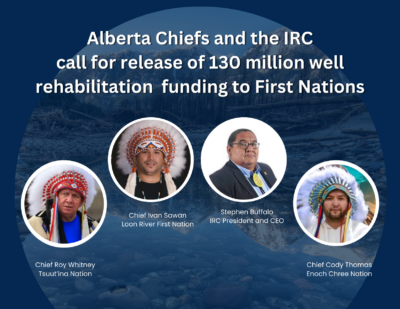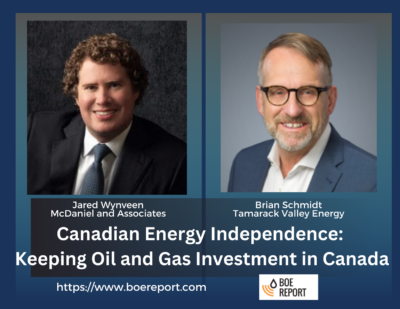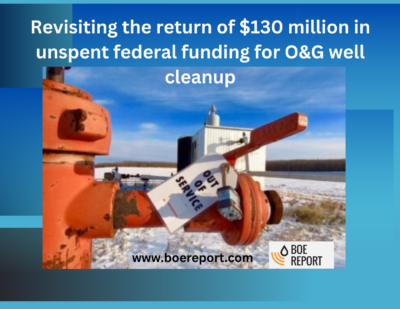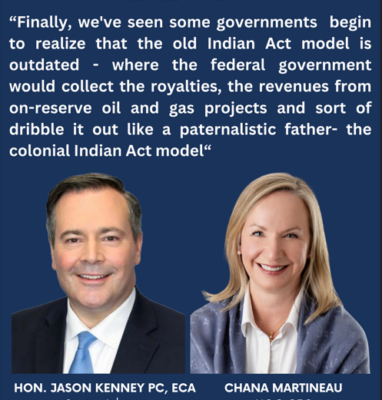In 2020, with a $1 billion Federal government cash injection to clean up inactive wells, the Alberta government allocated $100 million of that funding to Indigenous groups with $85 million in funding allocated to First Nations and $15 million to Metis communities. Currently, over $130 million of the total Federal money allocated to the province remains unspent which the provincial government has confirmed as an estimate and says it is expected to return. Today, Chiefs from across Alberta [Read more]
Canadian Energy Independence – Keeping Oil and Gas Investment in Canada
Moving away from producing oil and gas in Canada is coming at a very high cost. On one hand, it is slipping away because our federal leadership has embraced poorly conceived ideas that hydrocarbons are expendable while being oblivious to the ubiquitousness of their influence in creating Canadian prosperity. On the other hand, our neighbour and biggest trading partner, the U.S. has out-maneuvered every nation globally with the power of lucrative subsidies and incentives like the 45Q and the [Read more]
Revisiting the return of $130 million in unspent federal funding for O&G well cleanup
Back in April 2020, the Canadian Federal government announced $1.7B to clean up orphaned and abandoned wells in Alberta, Saskatchewan, and British Columbia that had the potential to create thousands of jobs. By July 2020, the Government of Alberta had announced they were developing the Liability Management Framework (LMF) to improve and expedite reclamation efforts for orphaned and inactive wells and infrastructure, in part as a response to the funding. The intent was “to enable industry to [Read more]
Deep Pore Space – the new frontier for competing emerging industries
Alberta is blessed with incredible geologic formations that hold a wealth of resources related to both hydrocarbons and energy transition essentials like lithium-enriched subsurface brines, deep geothermal rock formations and fluids at depths below the base of groundwater protection, formations with high concentrations of helium as well as rock formations that can safely store carbon dioxide (CO2) permanently for carbon capture and storage (CCS). As new industries emerge, they not only access [Read more]
Net Zero – Living In A Fact-Free World With Vaclav Smil
“I find we are living in a world that is absolutely fact-free.” A provocative sentence that Vaclav Smil used to open his address to the Calgary energy audience at the Canadian Energy Executive Association (CEEA) Beyond Boomers event at the Calgary Petroleum Club last week. It was a refreshingly direct and informed comment and although Smil is known for his no-nonsense, research-dense style of writing, he was a very entertaining speaker in person. Vaclav Smil is a Distinguished Professor [Read more]
Karen Ogen CEO of the First Nations LNG Alliance kicks off the NCC Clean Energy Summit
Speaking at the opening event of the National Coalition of Chiefs (NCC) 2024 Clean Energy Summit last night, Karen Ogen, CEO of the First Nations LNG Alliance and former Chief of the Wet’suwet’en First Nation, brought clarity to the challenges faced by Canadian LNG projects and demonstrated why there is a need to continue to raise voices in BC and Alberta and in Canada for LNG projects. Ogen called out the current Federal government’s intent to cap oil and gas production by capping emissions [Read more]
The far-reaching impact of the Alberta Indigenous Opportunities Corporation
Last month at the Indian Resource Council Canada's True Reconcili-Action conference in Toronto, Jason Kenney delivered a great keynote address, summarizing not only the back story of the Alberta Indigenous Opportunities Corporation (AIOC) but also his continuing work behind the scenes for its development. Jason Kenney, well known for his long political career in federal and provincial politics, now a senior advisor at Bennett Jones had some great insights into the formation of the AIOC and [Read more]
“Where is the money?” Financial insights for the Natural Resources industry from the BC Natural Resources Forum
For over 20 years the BC Natural Resources Forum has been a meeting of minds for all those interested in the development of the natural resource sector in BC and Canada. This year's forum was the 21st annual with an impressive assembly of stakeholders and interested parties in the natural resource industry in Canada. On day three of the conference, Hon James Moore Senior Business Advisor with Dentons Canada LLP, Kendra Johnson Managing Director of Pear Tree Canada, Kimberly Burns Lawyer [Read more]
21st Annual BC Natural Resources Forum – Long term visions for BC’s Export economy
Despite the frigid temperatures, high winds, snowstorms and multiple flight cancellations this week in BC and Alberta, the 21st Annual BC Natural Resources Forum presented a great collection of panel discussions and keynote speakers. At one point, on day two of the conference, organizers commented that some attendees were still in transit due to flight delays and rescheduling. Conveniently the conference also offered a virtual attendance option that allowed attendees to view the sessions if [Read more]
Indigenous leaders applaud Oil and Gas Industry collaboration at IRC Reconcili-Action Conference
As a polar vortex began its descent into BC & Western Canada late last week bringing record low temperatures, the Indian Resource Council (IRC) was trying to warm things up on Bay Street in Toronto with a conference proposing major project collaboration and investment for true reconciliation and action with Indigenous peoples. The True Reconcili-ACTION Conference featured discussions on such topics as First Nations participation in major capital projects and the power of investing and [Read more]
- 1
- 2
- 3
- …
- 11
- Next Page »









